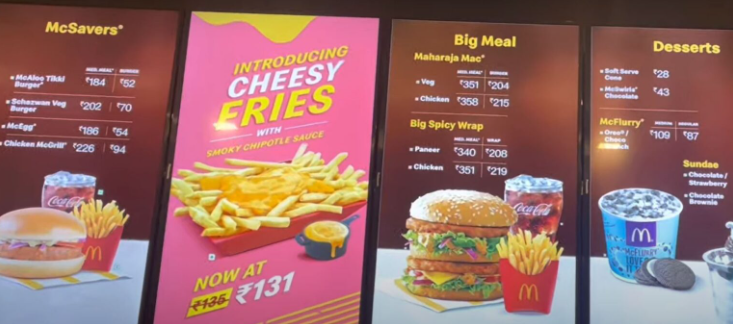10 Best Kukri Knives to Choose from
The Kukri knife is a Nepalese weapon and tool famous for its inwardly curved blade. It was initially used by Gurkha soldiers or the Nepalese army. Therefore, this knife is not just a tool or weapon but a ceremonial item. For the Nepalese society, it symbolizes bravery, honour, and tradition, often passed down through generations.
The Kukri knife is recognized by its forward curving blade. The knife is sharp and narrows towards the tip. The unique shape aids in efficient chopping and slicing. The blade length is around 35 to 50 cm, and the knife weighs about 1 kg. A Kukri knife has several uses, such as digging, slaughtering animals for food, and cutting meat and vegetables. It is also used as an agricultural tool in Nepal and other parts of the world.
There are diverse Kukri knives based on their blade design, size, shape and handle material. Therefore, choosing a Kukri knife for your needs could be difficult. But don’t worry. This blog post will help you distinguish between the ten best Kukri knives.
First, let’s discuss the different types of Kukri knives based on their blade features:
BhojPure Kurki
BhojPure kukri is mainly used for agriculture work. But it is more than just a cutting knife for a farmer; instead, it is his reliable companion. The BhojPure kukri boasts a distinct curved blade, usually 13-14 inches long, with a pronounced belly. The thick edge allows powerful and precise cutting.
Apart from agricultural work, the BhojPure kukri is handy during combat. This knife also has cultural significance. It is named after Bhojpur, a village in eastern Nepal. The original BhojPure was made centuries ago and is still being used today.
Sojo
The Sojo kukri knife, though uncommon, is highly favoured by people in remote areas, like farmers, shepherds, and villagers, for their daily work. It’s known for being super effective and easy to handle, so much so that many local kukris in villages are made in this style. Unlike other kukris, the Sojo’s spine doesn’t have a prominent shoulder; instead, it gently slopes towards the tip, giving it a straight appearance known as “Sidhe” in Nepali. The blade length ranges from 10-12 inches.
Sojo is designed as an everyday carry knife (EDC). Therefore, the makers focus on keeping it lightweight.
Chaaklo
This kukri is among the heaviest kukri types. The term “chaaklo” literally means broad and robust. Traditionally, many Chaaklo kukris had short handles, but changing demands led to modern versions with elongated handles for better grip and balance. This evolution accommodates comfort and improved handling. Its stout shape enhances its chopping prowess, outperforming other blade profiles in speed and efficiency.
Ang Khola Kukri
The Ang Khola kukri possesses a distinct blade shape characterized by a deep curve and a shorter, broader blade of approximately 11 inches. Its unique design emphasizes chopping efficiency and durability, making it adept at handling heavy-duty tasks such as woodcutting and various cutting applications.
Sirupate Kukri
The Sirupate kukri derives its name from a leaf found in the hilly areas of Nepal, meaning ‘slim.’ The shape of the knife resembles the leaf’s pattern. It is an essential tool for locals, especially farmers, as it caters to day-to-day activities and comes in handy in survival situations.
Its 10-inch slender blade offers excellent reach and ensures ease of use and mobility. Despite being slimmer and lighter than other kukris, the Sirupate remains highly functional and efficient.
Chainpure Kukri
With a broader blade measuring 14-15 inches, the Chainpure kukri stands out for heavy-duty tasks. Its robust design and wide edge make it an excellent choice for demanding cutting and combat situations.
Next, let’s discuss the various types of kukri based on their handle material and design.
Wood-Handled Kukri
Traditionally crafted with hardwood, this type ensures a sturdy grip. It is perfect for extended use and tactical tasks. The hardwood handle is often made from materials like rosewood or walnut. The handle undergoes meticulous carving and shaping to ensure a design that fits snugly in the hand.
Horn-Handled Kukri
The Horn Handled Kukri, crafted from animal horn, provides both durability and a distinctive appearance. It seamlessly blends tradition with practicality. This type of handle is commonly featured in kukris like the BhojPure Kukri, where the horn handle reinforces the knife’s structure and adds a touch of traditional charm and functional grip.
Brass-Handled Kukri
The Brass-Handled Kukri is prized for its durability and elegance. Brass is known for its strength and corrosion resistance. Moreover, most manufacturers provide engraved brass handles. The engravings add a decorative element and increase the knife’s aesthetic appeal while maintaining a solid grip.
Bone-Handled Kukri
The Bone Handled Kukri uses animal bones, often sourced from buffalo or cattle. It blends an attractive appearance with a firm grip. Using bone in the handle adds visual appeal while providing a sturdy hold. This type of handle is commonly found in kukris like the Ang Khola Kukri, where the bone material enhances the knife’s aesthetics and practicality for everyday use.
Each kukri variation discussed above has its uses. But all of them are made with the Nepalese essence of courage and honour. We hope this blog post was able to help you decide on a kukri knife that suits your needs.






